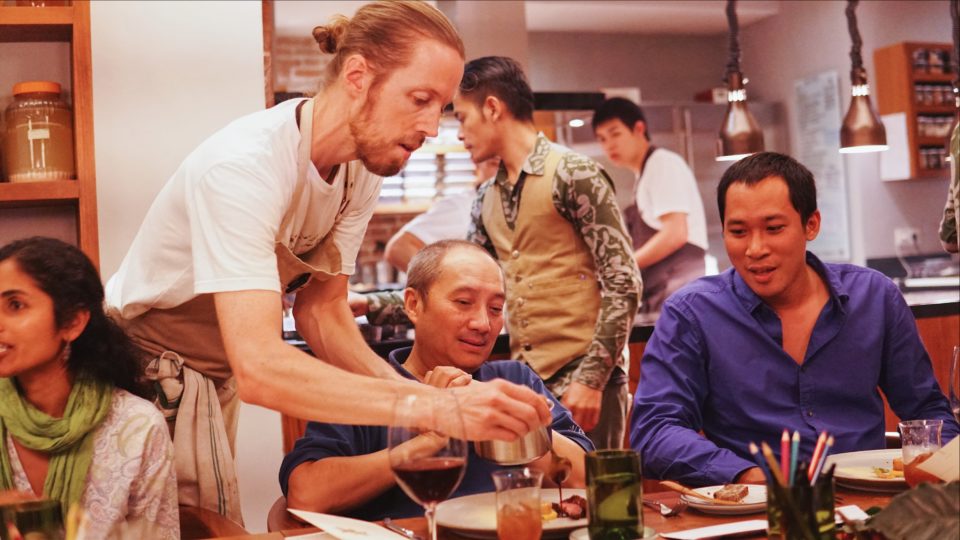A food laboratory in Ubud backed by one of Bali’s most hyped restaurant groups has been playing with various local ingredients and coming up with some pretty crazy, edible results.
An intimate multi-course dinner dedicated entirely to exploring the tea plant through a variety of cooking techniques and cocktail pairings is going down in Locavore’s research and development lab, appropriately named LocaLAB, this Saturday.
The “eat tea” themed dinner is a collaboration with Indonesian tea company Dharma Teas and costs IDR850k++ (US$55.92++) including alcoholic pairings. Worth it? Keep reading on for our breakdown of a previous LocaLAB dinner, as you weigh whether you want in or not.
A test kitchen, LocaLAB is where the guys behind the ingredient-driven Locavore, Locavore to Go, Local Parts, and Night Rooster, do all their recipe exploration and technique experimentation. It’s got a single kitchen, one long dining table, and a bunch of mysterious-looking oddities, like various things fermenting in giant glass jars. The lab is hidden in plain sight above Nusantara, the Locavore empire’s Indonesian restaurant on Jl. Dewi Sita.
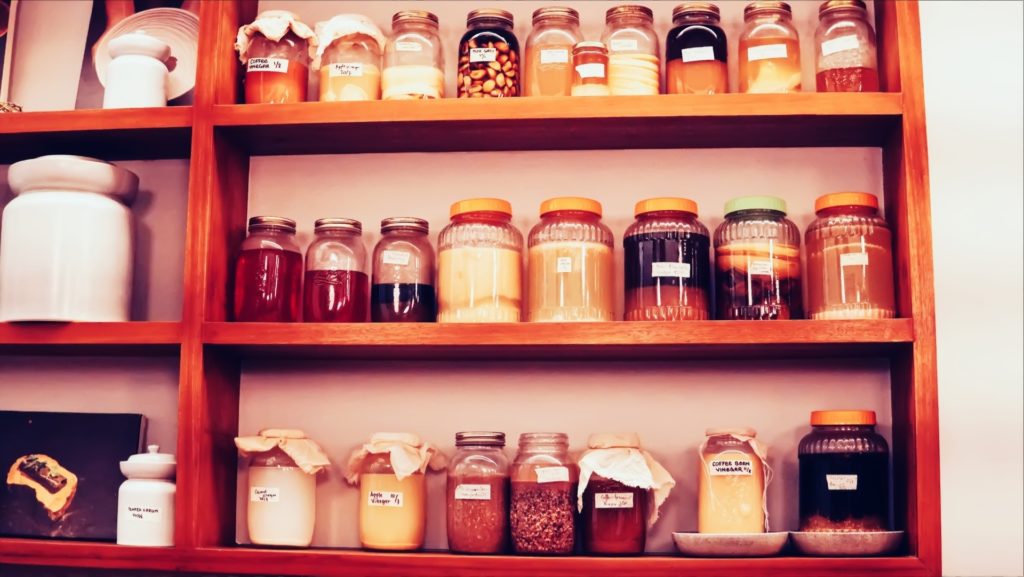
The multi-course LocaLAB dinners, which they refer to as their “Work in Progress” special event series, aren’t held regularly (they’re not on a monthly basis and are more so organized whenever inspiration strikes and logistics come through) and they’re not that strict sticking to any rules either: their last theme, slow food, wasn’t actually centered around an ingredient, but more of a food philosophy.
Before slow food and after taking a go at “bread,” LocaLAB did coffee, which we got invited to try out one evening this past August. After previously sampling their recently launched Butcher’s Table concept, we have to admit we were pretty curious to see how a more avant garde culinary experience from the group would turn out. Plus, we like coffee. A latte.
For each theme, LocaLAB partners with a local business who they consider an expert in their featured ingredient. For coffee, it was the Canggu-based Hungry Bird Coffee Roaster.
It was evident throughout the night that LocaLAB worked closely with the coffee roaster in bouncing around ideas for sourcing and breaking down the dinner’s ingredients, as well as developing the recipes as LocaLAB chef Felix Schoener and Hungry Bird owner and founder Edo took turns addressing the audience (aka our 12-person table).
The night opened with a video showing our dinner from the ground up, literally. In the video, you could see Hungry Bird taking LocaLAB on a field trip to Bali coffee country Kintamani to check out some beans and see the event’s key ingredient at the source.
Going in to the dinner, we were expecting a lot of espresso-flavored items.
Ironically, one of the first lines that Schoener put out there was this: “We try to find different ways to bring the coffee in there without using espresso.”
“For me it’s always fascinating what you can do with the whole plant,” he told our table of 12.
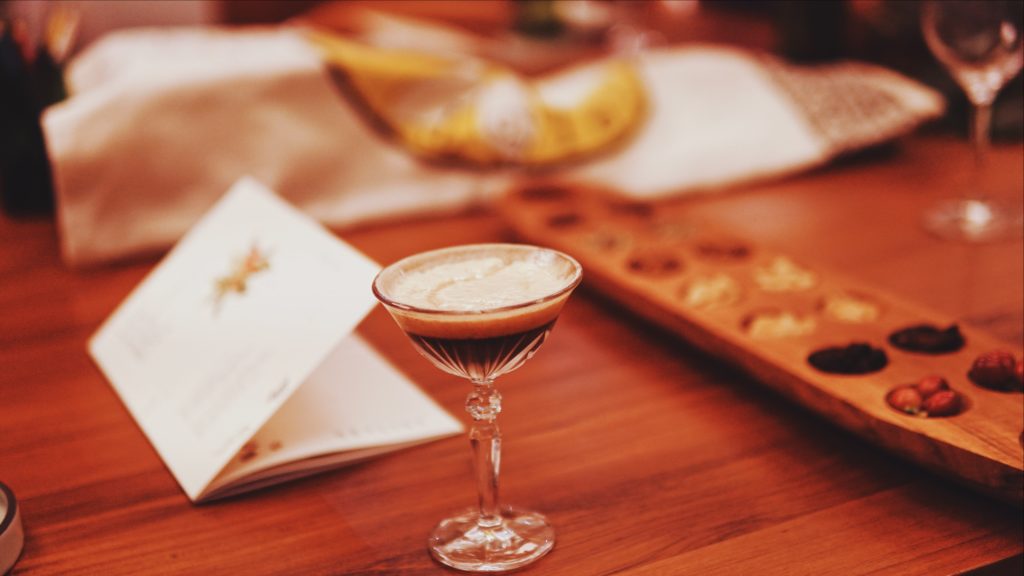
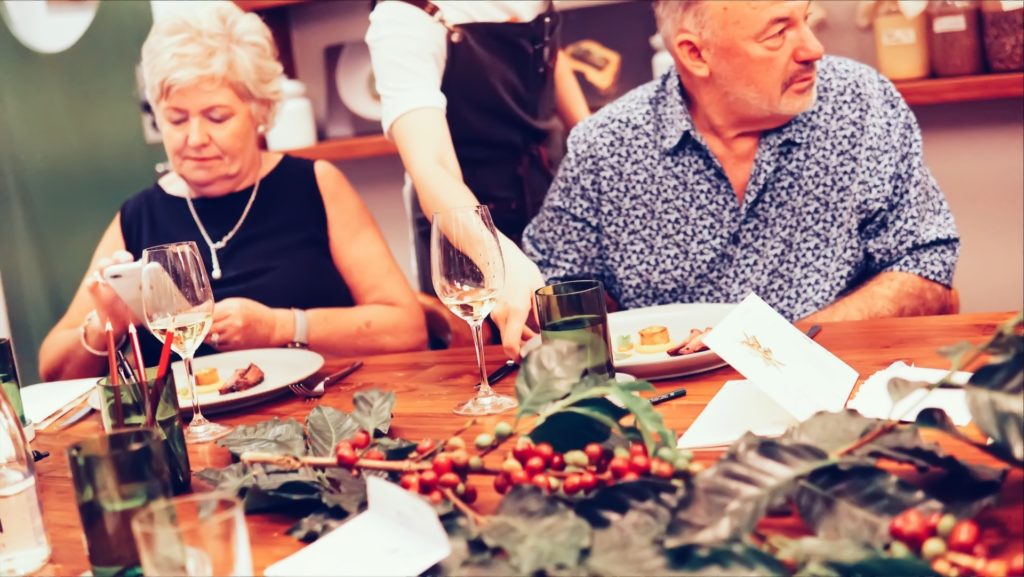
We are huge fans of all things espresso, so we’re kind of embarrassed to say we would have been okay with that approach, of eating round after round of coffee-flavored things, but upon reflection, we admit that wouldn’t have involved so much boundary pushing as what came next.
Throughout the night, we ate up concoctions from not just the bean, but all parts of the coffee plant, including pieces normally discarded as waste.
The night opened with by far the weirdest way we’ve ever experienced a potato. It came out in a little espresso cup, but inside was mocha potato foam, caramelized shallots, black shallot powder, “potato chip” (not the Lays kind), and soy milk foam. It really was like if a cup of coffee and a potato decided to procreate, then some shallots jumped in for added acidic flavor.
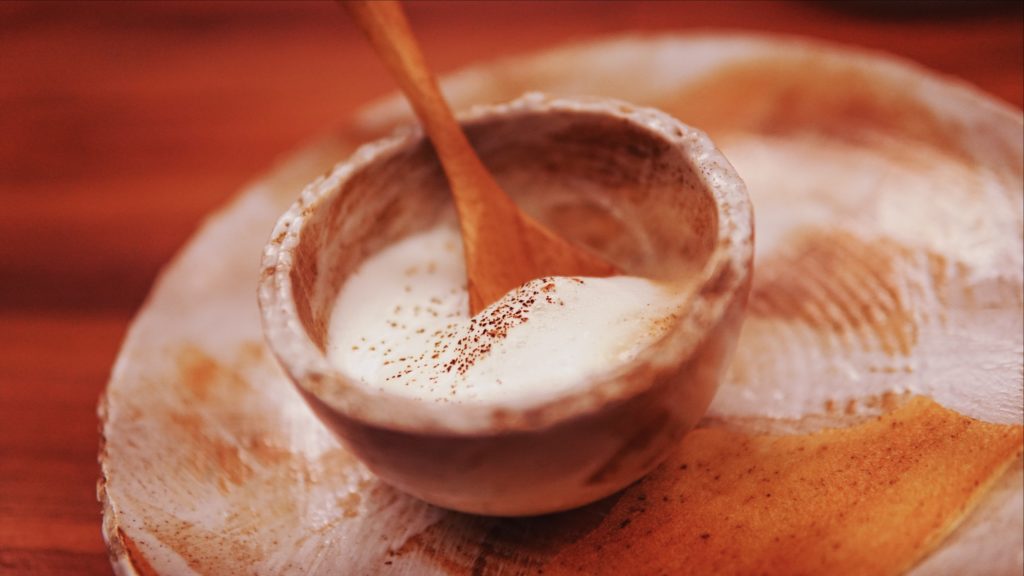
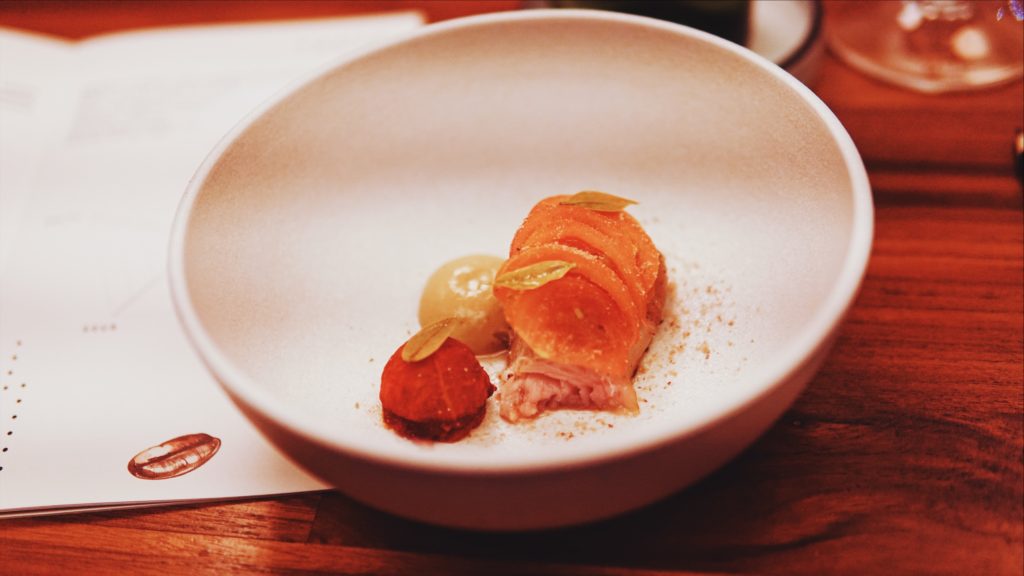
Perhaps one of our favorite plates of the night was the second course: bonito, lightly cured in West Java Frinsa Collective espresso. Yep, it clearly had some espresso flavor worked in there, but on top of the fish was some lesser commonly utilized parts of the plant: confit in cardamom coffee oil, a pickled coffee leaf, and coffee berry vinegar gel. Other elements of the plate included a kecap (sweet soy) lemongrass emulsion and heirloom tomatoes. This was paired with vodka, charred lemongrass, and coffee berry vinegar.
One of the more “controversial” plates of the night amongst our fellow diners was the beetroot, with beef tartar: slow-baked in a coffee salt crust, lightly smoked with coffee leaf and husk, a coffee beet mousse, dressed with a coffee oil beet vinaigrette, unripe coffee capers, hibiscus leaf, and a beetroot rosella oil. Just looking at the ingredient list you can tell the thing was complex both in flavor and texture, though we’d say slight-coffee-tasting beet flavor would be the best way to put it in unrefined terms. As for the texture, there was complaint from our table neighbor of a hard ingredient in small bits that was just too hard to chew down and we knew exactly what she was talking about, as it kept catching in our back molars—despite this chewing issue, we enjoyed this creation. Playing off the course’s contents, a gin-based cocktail was paired with this one, featuring roasted beetroot juice, cascara, hibiscus, and pickled beetroot.
As a side dish, some coffee bread made with cascara flour was brought out, served with coffee butter. Sometimes the simplest things are the best; this was true with the coffee bread/butter. We had to have second helpings of it.
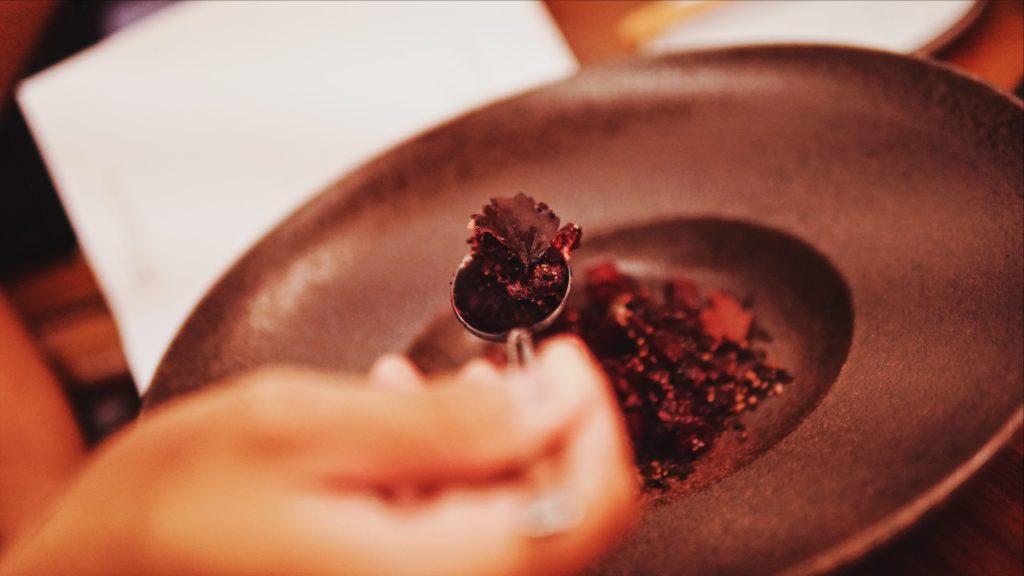
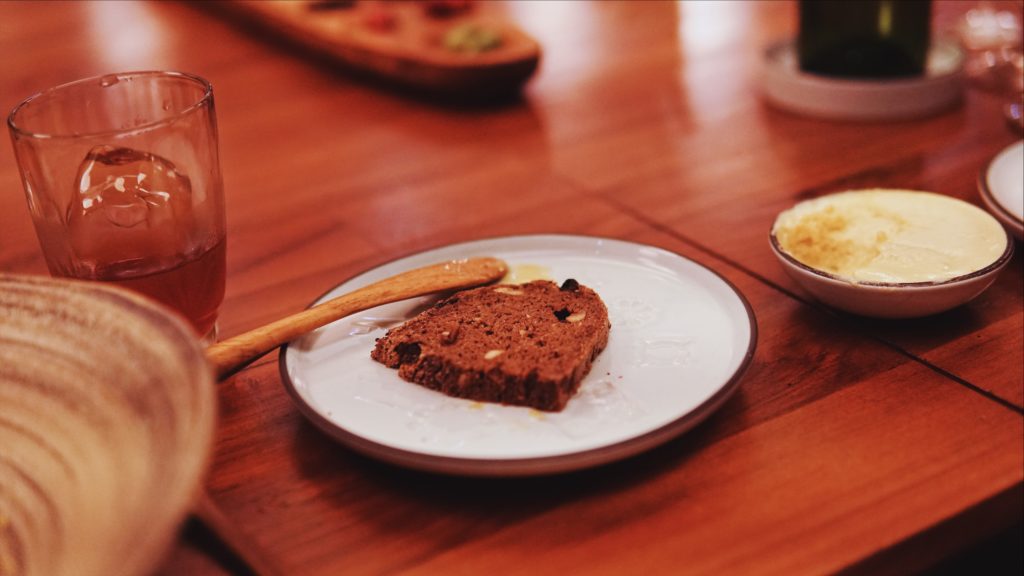
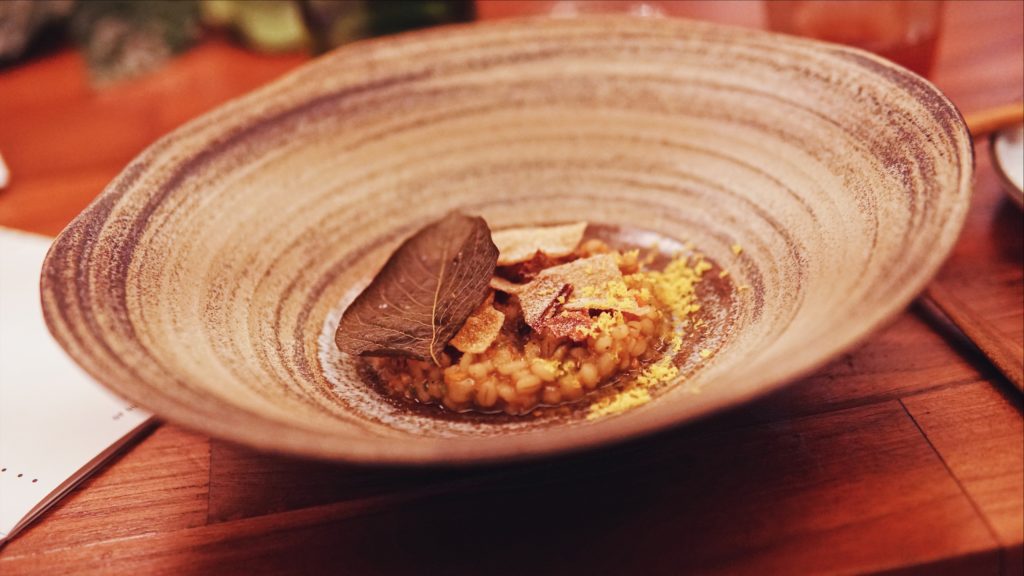
Next came the risotto, or “umami in its full power,” as Schoener put it. Essentially a shiitake mushroom risotto, the “expression of umami” came with barley espresso, crispy mushrooms, mushroom chips, crispy amaranth leaves, and mushroom powder. We love savory things and are actually quite into mushrooms, but for us, we’d instead call this course “salt in its full power” and was just skewed way too much towards the salt flavor zone and had us reaching for its cocktail pairing of rum, coffee liquer, coffee vermouth, and bitters to wash the salt out.
LocaLAB leveled up with the main course that followed, a duck in a coffee spice rub, cinnamon ginger glaze, and coffee citrus sauce, plated with coffee roasted sweet potatoes, passionfruit pickled shallots, passionfruit seeds, and cacao spice dukka. The bar was set high for the duck, since the restaurant group has Local Parts, their own in-house butchery, but expectations were met. The meat itself was tender and juicy while the blend of spices and texture with the dukka, and sauce (we love us some sauce) put it over the edge.
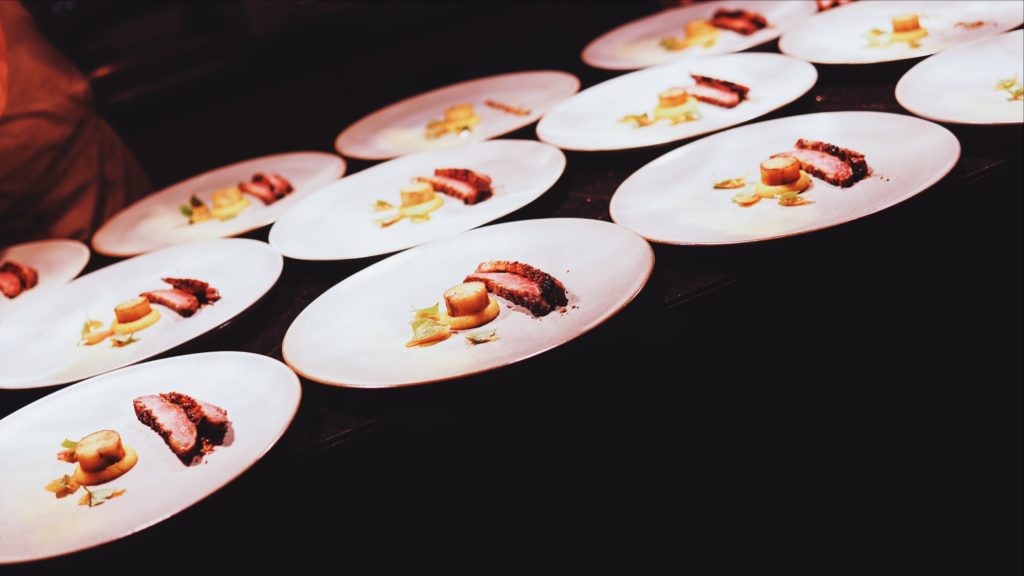
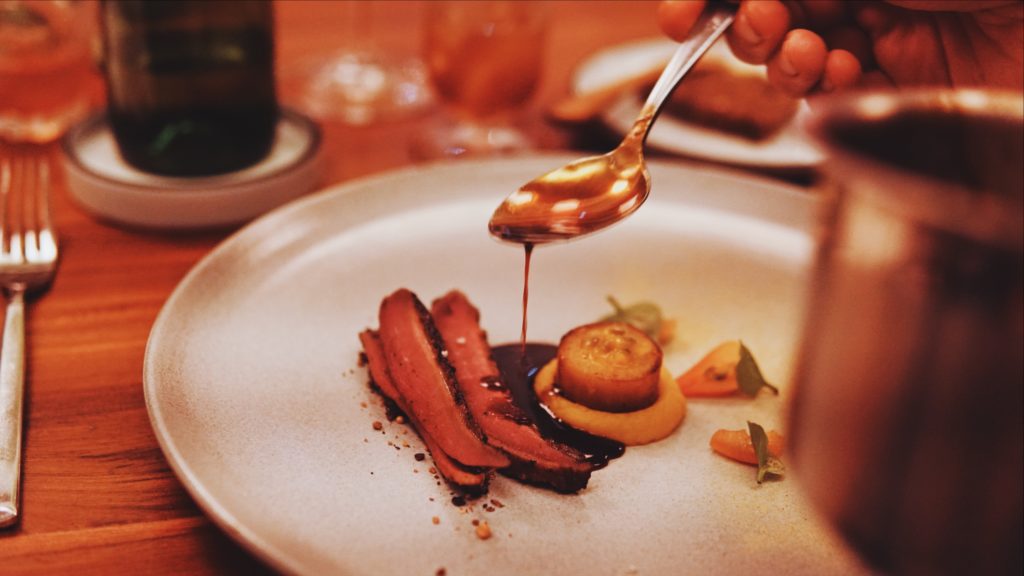
We’d like to give a special shoutout to the drink partner of the duck: vodka, smoky coffee orange, cascara, and coffee cherry. Coffee and oranges grow together, so it’s only natural to serve them together, Schoener later pointed out.
And moving along those lines, after dinner but before dessert, came a little palate cleanser, a coffee cherry sorbet with fermented coffee flower honey, candied orange leaf, and charred orange emulsion. We’re into chocolate with orange and chocolate with coffee, so we suppose it makes sense that orange and coffee would work.
Dessert was an “affocado”, an avocado take on an affogato, the old Italian favorite of a scoop of vanilla gelato in a shot of espresso. White coffee coconut gelato, a cacao nib crumble, chocolate avocado cream, cold brew coffee grantia, and nitro infused espresso, it really was the Indonesian version of a cafe classic.
And as if all that weren’t enough, there was also a bonus round of dessert nibbles served on what we were told was coffee bark. We should also mention that they sent everyone home with a goodie bag, with Hungry Bird roasted Bali Arca Ulian beans and a little package of chocolate covered espresso beans to sweeten the deal.
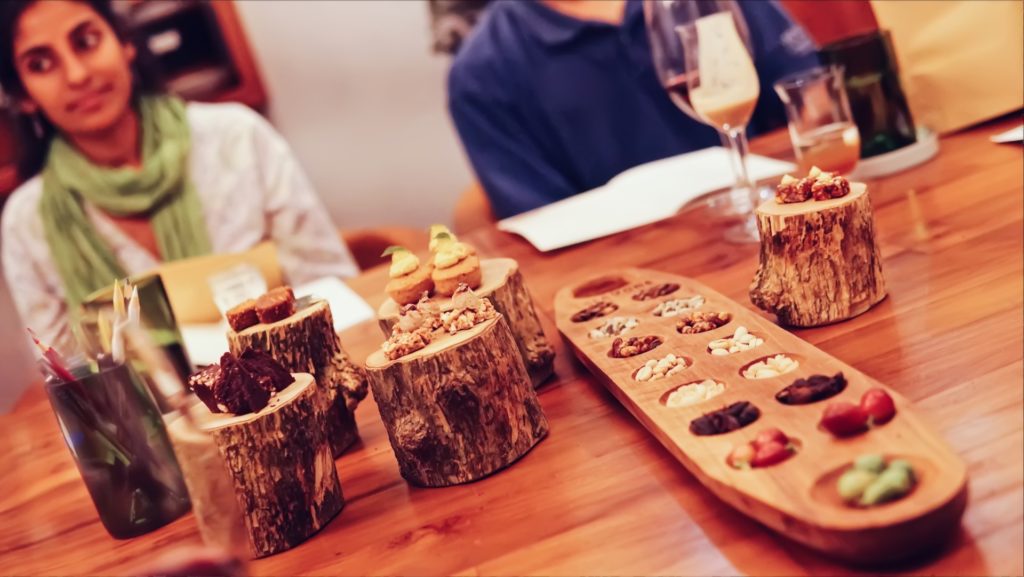
Dinner didn’t end with dessert. Because the night was about coffee, the coffee finally had a chance to sit center stage, without any added in ingredients. We were each brought out three little shot glasses of coffee, including West Java Frinsa Collective, Colombia La Palma Y El Tucan, and Panama Finca Deborah beans, manually brewed pour-over style. We were given a list of three flavor profiles then asked to do a blind taste taste, matching the coffees to their labels. It was hard. No one got all three.
That last phase of dinner, wonderfully reflects the whole essence of LocaLAB’s “Work in Progress Series” if we had to boil it down to one word: playful. With some guidance and inspo from Edo, Schoener was essentially given a carte-blanche to tap into his culinary imagination, flex his kitchen skills and use whatever techniques and whatever additional ingredients to create a seven-course feast.
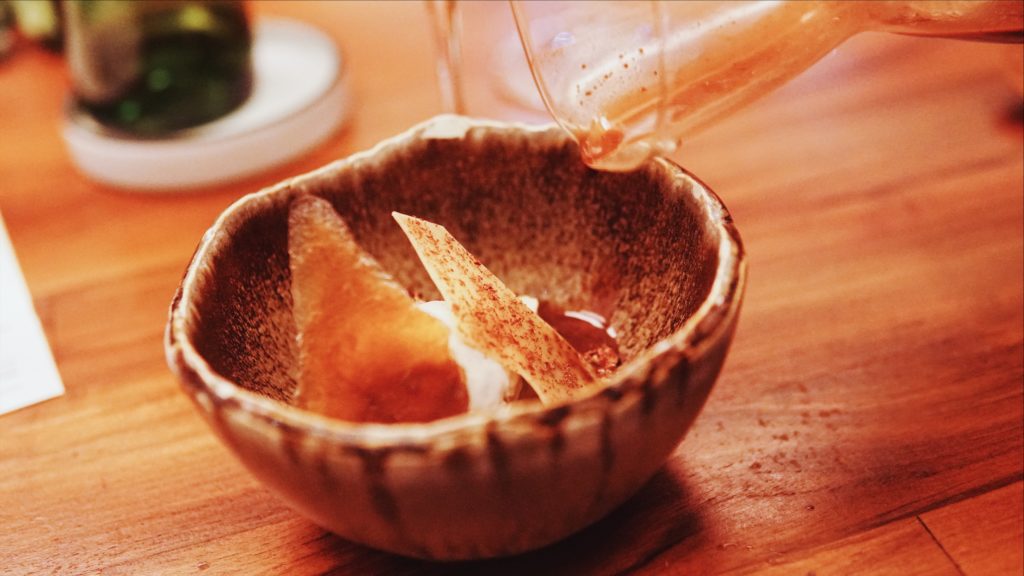
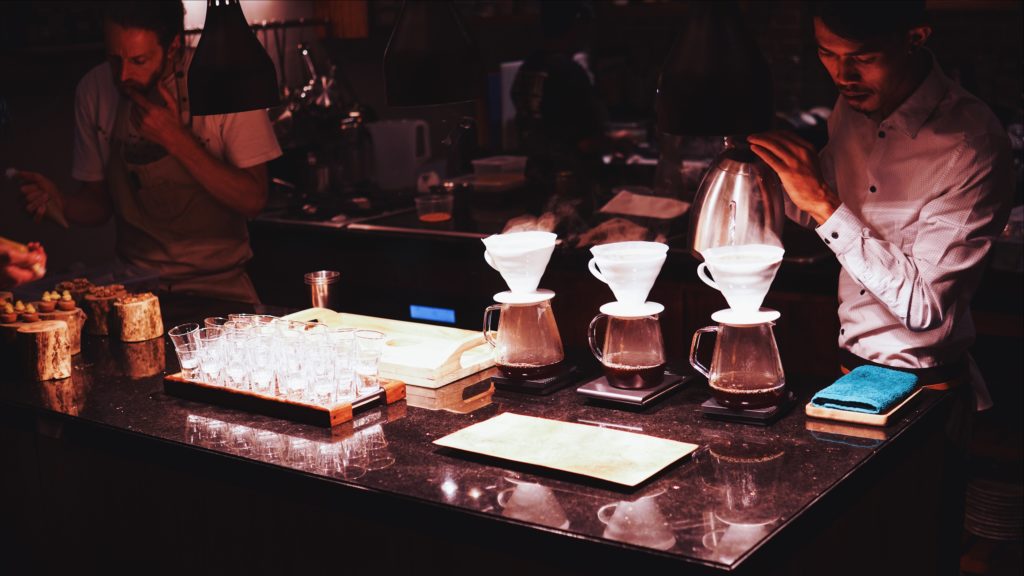
“We really only had one month,” to develop it all, Schoener explained. Time was limited in putting together this dinner, so it’s not like the menu was years in development, but we could tell it was designed vigorously.
Not every single item that came out was a hit from where we were sitting, but way more worked than didn’t and it was pretty darn exciting getting to try such experimental inventions. Most chefs probably wouldn’t dare go where Schoener took us that night, which we’d say is pretty special if you’re someone who is passionate about food and experimentation.
And if you’re wondering: yes, it was exceptionally hard to fall asleep after dinner that night. All the cocktail pairings helped subdue the caffeine effect to some extent, but that’s got to be one of the most intense caffeine highs we’ve experienced to date.
To sign up for “Eat Tea” for Oct. 13, check availability with LocaLAB here.
FIND IT:
LocaLAB
Jl. Dewi Sita 9C, Ubud
(second floor of Nusantara)
+62(0) 3619 729 73
